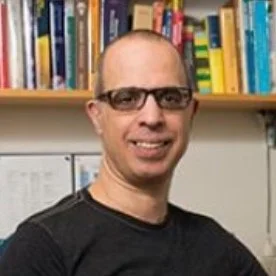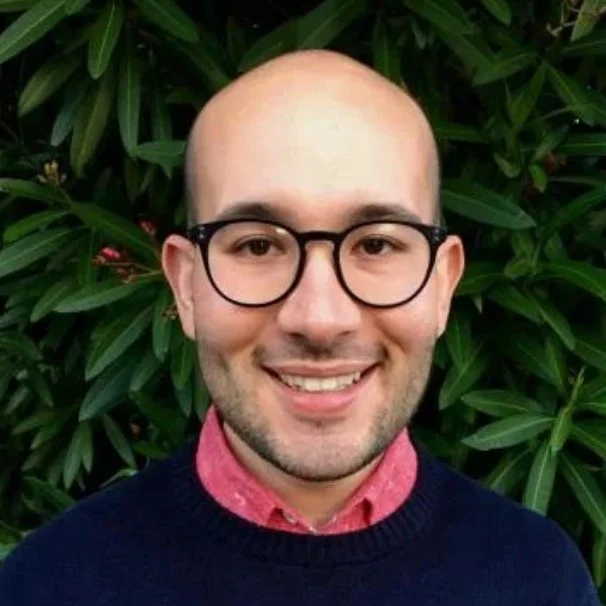Friday, May 6
10:30 AM -
1:00 PM EDT
via Zoom
watch the lectures
New developments for general condensed phase
quantum dynamics simulations
Abstracts available below
10:30 - 11:00
Quantum master equations for simulating the dynamics of electronic observables
Eitan Geva
University of Michigan
—
11:00 - 11:30
Exploiting memory in chemical systems: from electron & energy transfer to biomolecular dynamics using memory kernels
Andrés Montoya-Castillo
University of Colorado, Boulder
—
11:30 - 12:00
Quantum master equations with quasi-classical memory kernels
Aaron Kelly
Max Planck Institute
—
12:00 - 12:30
Long-time memory effects in a localizable central spin problem
Eran Rabani
University of California Berkeley
—
12:30 - 1:00
Informal discussion
-
Eitan Geva, Department of Chemistry, University of Michigan, Ann Arbor
A variety of important dynamical processes that take place in biologically and technologically important condensed-phase systems involve an intricate network of interrelated electronic energy, charge, and coherence transfer pathways. The simulation of the inherently quantum-mechanical electronic dynamics underlying these pathways faces multiple formidable challenges, including the quantum dynamics challenge associated with simulating the intrinsically quantum dynamics of a system that consists of a large number of coupled electronic and nuclear degrees of freedom (DOF). A powerful strategy for tackling the quantum dynamics challenge is to treat the electronic DOF of interest as an open quantum system and restrict the input regarding the remaining electronic and nuclear bath DOF to the minimum necessary in order to account for their effect on the electronic DOF of interest. Quantum master equations (QMEs) provide a general purpose framework for formulating the effect of the bath DOF on the dynamics of the electronic DOF of interest in terms of temporally and dimensionally compact reduced quantities, such as memory kernels whose matrix elements correspond to population relaxation, dephasing and coherence transfer rates. In this talk, I will overview QME-based computational approaches that were developed by my group and their application to simulating the dynamics of electronic observables in systems of chemical, biological and technological interest.
1. E. Mulvihill and E. Geva, “Simulating the Dynamics of Electronic Observables via Reduced-Dimensionality Generalized Quantum Master Equations” J. Chem. Phys. 156 044119-17 (2022)
2. Y. Lai and E. Geva, “On Simulating the Dynamics of Electronic Populations and Coherences via Quantum Master Equations Based on Treating Off-Diagonal Coupling Terms As A Small perturbation” J. Chem. Phys. 155 204101-19 (2021)
3. Z. Tong, X. Gao, M. Cheung, B. Dunietz, E. Geva, and X. Sun, “Charge Transfer Rate Constants For The Carotenoid-Porphyrin-C60 Molecular Triad Dissolved in Tetrahydrofuran: The Spin-Boson Model vs. The Linearized Semiclassical Approximation” J. Chem. Phys. 153 044105-9 (2020)
-
Andres Montoya-Castillo, University of Colorado Boulder
Elucidating the impact of dissipation is essential for understanding and predicting processes as diverse as energy harvesting in photosynthetic systems, electrical transport at the nanoscale, and decoherence in quantum computing devices. Here I will show how memory kernels, which lie at the heart of generalized quantum master equations, provide an ideal theoretical and interpretational tool to understand these processes and efficiently simulate them. In particular, I will illustrate how this formalism can be used to improve the efficiency and accuracy of quantum-classical approaches to simulate the dynamics of charge and energy transfer in the condensed phase. I will then leverage our systematic analysis of the various quantum mechanically exact formulations of memory kernels to explain and predict when and how generalized quantum master equations can be used to improve the accuracy of quantum-classical predictions of the charge and energy transfer dynamics of model and realistic chemical systems [1-4].
[1] A. Kelly, A. Montoya-Castillo, L. Wang, T. E. Markland. “Generalized quantum master equations in and out of equilibrium: How can one win?” J. Chem. Phys. 144, 184105. (2016)
[2] A. Montoya-Castillo, D. R. Reichman. “Approximate but accurate dynamics from the Mori formalism: I. Nonequilibrium dynamics.” J. Chem. Phys. 144, 184104. (2016)
[3] A. Montoya-Castillo, D. R. Reichman. “Approximate but accurate dynamics from the Mori formalism: II. Equilibrium correlation functions.” J. Chem. Phys. 146, 084110. (2017)
[4] W. C. Pfalzgraff, A. Montoya-Castillo, A. Kelly, T. E. Markland. “Efficient construction of generalized master equation memory kernels for multi-state systems from nonadiabatic quantum-classical dynamics.” J. Chem. Phys. 150, 244109. (2019)
-
Aaron Kelly, Max Planck Institute
In this talk I will discuss approximate methods for constructing the memory kernel of the generalized quantum master equation. Particular focus will be placed on quantum-classical approaches, such as those based on mean-field theory [1,2], or techniques based on the mapping representation [3,4]. The long-time limit of the dynamics generated from such approximate kernels will also be analyzed.
[ 1 ] A Kelly, N Brackbill, TE Markland, J.Chem.Phys., 142 (9), 094110 (2013)
[ 2 ] SA Sato, A Kelly, A Rubio, Phys.Rev.B. 97 (13) 134308 (2018)
[ 4 ] MAC Saller, A Kelly, JO Richardson, J. Chem. Phys., 150 (7), 071101 (2019)
[ 5 ] JE Runeson, JO Richardson, J. Chem. Phys., 151 (4), 04419 (2019)
-
Eran Rabini, UC Berkeley
The properties of the Nakajima–Zwanzig memory kernel for a qubit immersed in a many-body localized (i.e. disordered and interacting) bath is discussed. We argue that the memory kernel decays as a power law in both the localized and ergodic regimes, and show how this can be leveraged to extract t → ∞ populations for the qubit from finite time data in the thermalizing phase. This allows us to quantify how the long-time values of the populations approach the expected thermalized state as the bath approaches the thermodynamic limit. Additionally, our numerics on finite baths reveal the possibility for unbounded exponential growth in the memory kernel, a phenomenon rooted in the appearance of exceptional points in the projected Liouvillian governing the reduced dynamics. In small systems amenable to exact numerics, we find that these pathologies may have some correlation with delocalization.
Organized by Seogjoo Jang (Queens College and The Graduate Center, CUNY) and Eitan Geva (University of Michigan). Sponsored in part by the Initiative for the Theoretical Sciences and the CUNY doctoral programs in Chemistry and Biochemistry.





